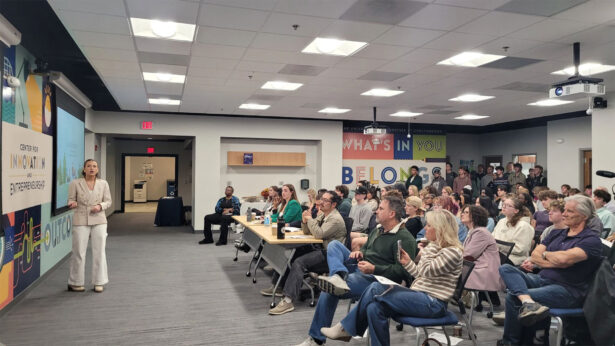When Center for Industrial Services (CIS) resource consultant Lynn Reed visited the first food manufacturing facility that was the subject of an energy audit, he had to put a coat on—despite the more-than-comfortable outside temperature. Tthe temperature inside the building was like a cold fall evening.
“One of the things we find in many facilities is the amount of energy consumed starting and stopping large motors,” Reed says. “They must run huge air conditioners to keep the place cool, and the cooling comes with large motors—some as big as 500 horsepower with no soft starts or variable frequency drives. They have to heat other equipment, so boiler energy savings is an issue as well.”
Armed with a grant from the U.S. Environmental Protection Agency (EPA), CIS, an agency of the UT Institute for Public Service, has worked with five Tennessee food manufacturers so far to help them reduce their carbon footprints. CIS has used two EPA grants totaling $140,000 to offset costs to manufacturers and help them reduce their energy costs and will apply for a third.

“With the three different plants we worked with initially, we produced a report that showed savings to their bottom lines,” Reed says. “With the changes made, their return on investment was about 58 percent or a payback slightly less than two years. That’s the type of thing senior managers are looking for.”
The CIS team of Reed and part-time consultant Albert Tieche pinpoints inefficiencies at these facilities and provides detailed implementation strategies to help the organizations see cost savings. Larry Moore, a retired professor from the University of Memphis, rounds out the consultant team.
“With our experience and thorough approach to utility analysis, we are able to understand industry operations and opportunities in energy efficiency. We offer solutions with a focus on competitive return on investment,” says Keith Ridley, director of CIS’ energy efficiency and environmental management programs.
According to the Tennessee Economic and Community Development office, the state was home to more than 7,000 manufacturers at the end of 2021, with close to 1,700 of them being food manufacturers.
“The food manufacturing sector is often overlooked. Other sectors such as automotive and appliance manufacturing get a lot of attention to help them reduce their carbon footprints,” Reed says.
The CIS energy audits review the use of energy, water and chemicals. Reed and Tieche analyze a company’s usage and expenditures and then interview the facility’s managers to identify the opportunities. They share with the company what they’ve found and make recommendations for improvements, but it’s up to the company to make the changes.
CIS recently worked with a Macon County manufacturer to address its biological oxygen demand, which was double what it should have been. Biological oxygen demand is the amount of oxygen consumed by bacteria and other microorganisms while decomposing organic matter under aerobic conditions. The CIS team identified six issues that were causing the biological oxygen demand to double, and the company made changes to address the issues.
“When you bring it to their attention, it is one of those ah-ha moments,” Reed says. “Facilities have someone internal to worry about production and equipment reliability, but they don’t spend a lot of time working at energy savings and waste. They look at it as simply the cost of doing business. However, we are starting to see a big push from companies asking their suppliers, ‘What are you doing about energy savings?”



